|
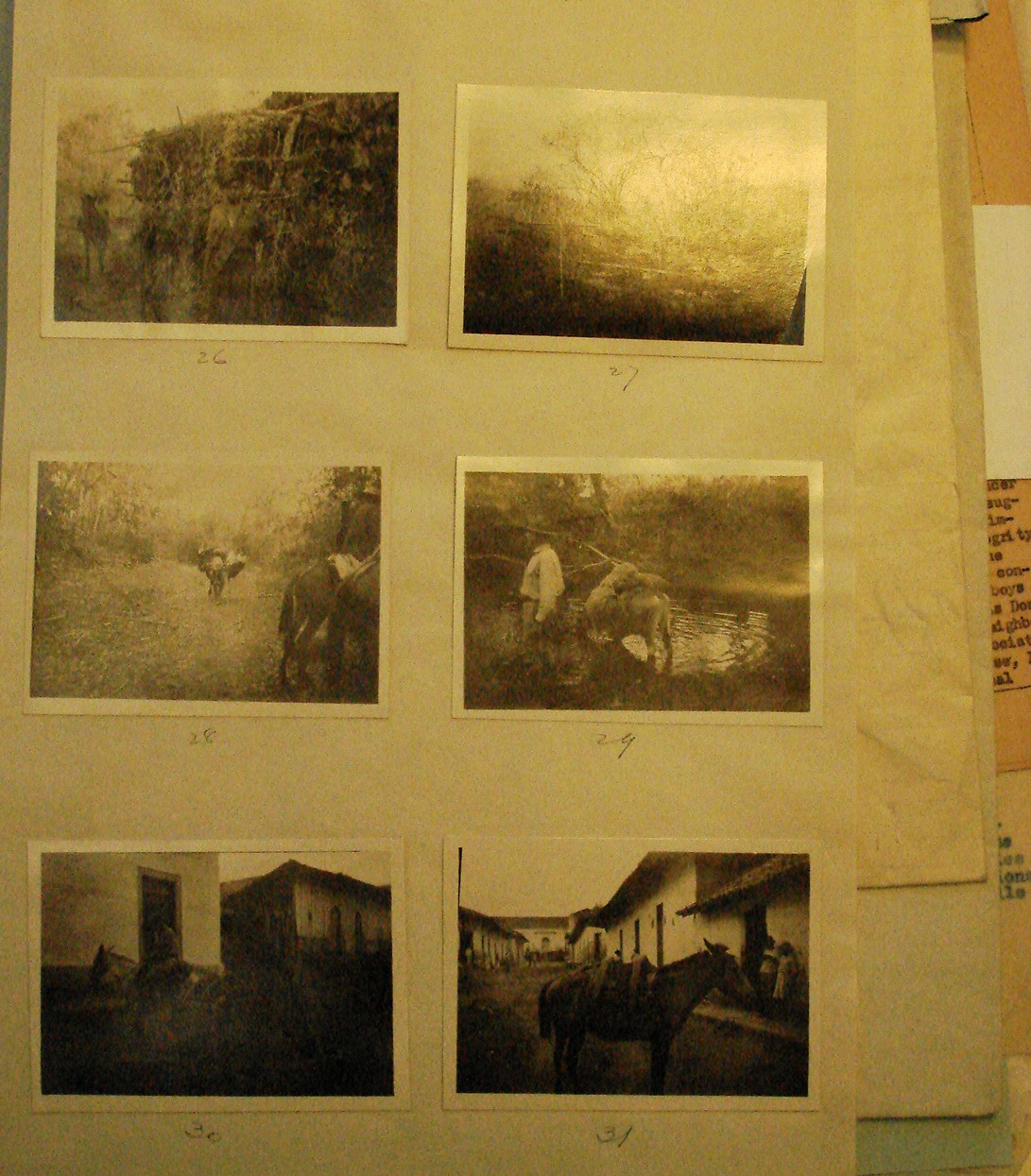 These USNA2 Photo Pages begin with a series of
never-before published photographs
discovered in
Record Group 165,
Military Intelligence Division, Entry 77, Regional File
1922-44, Nicaragua. Tucked inside box no.
2660 were found 30 small Kodak photographs,
affixed in clusters of six to five pieces of
paper,
appended to a fascinating 9-page narrative of
events by U.S. Military Attaché
Major A. W. Bloor that describes the
circumstances under which they were produced.
High-resolution scans of these photographs are
presented & interpreted below and in the two
pages to follow.
These USNA2 Photo Pages begin with a series of
never-before published photographs
discovered in
Record Group 165,
Military Intelligence Division, Entry 77, Regional File
1922-44, Nicaragua. Tucked inside box no.
2660 were found 30 small Kodak photographs,
affixed in clusters of six to five pieces of
paper,
appended to a fascinating 9-page narrative of
events by U.S. Military Attaché
Major A. W. Bloor that describes the
circumstances under which they were produced.
High-resolution scans of these photographs are
presented & interpreted below and in the two
pages to follow.
As Major
Bloor's "Report of Operations" describes his
mission: "At
12.15 pm, March 26, 1927, I left Managua by
automobile in company with Major D. Rodriguez,
U.S.A., retired, and Mr. A. A. Cohen, my clerk,
to observe the forces of General Rivers
Delgadillo, consisting of 700 men, on the march
between Tipitapa and Teustepe enroute to
concentration area west of Muymuy and south of
the Rio Grande and to inspect positions occupied
by General Noguera Gomez immediately south of
Tierra Azul."
The three Americans
accompanied the US-supported Conservative troops
during the most decisive phase of the war.
Soon after these photos were taken, Generals Noguera
Gomez, Rivers Delgadillo, Bartolomé
Víquez, and other Conservative
forces were badly defeated by the Liberal
"revolutionists," who by late April were poised
to march on Managua. In short, these
photographs were taken just before the big
Conservative defeats at the tail end of the
Civil War. Interested readers can
find the full text of Major Bloor's report of 3
April 1927 here along with the index to
photographs:
1
2
3
4
5
6
7
8
9
10
These are marvelous and
powerful photographs, offering a unique window
on Nicaraguan warfare & social realities during this period. For the full
images of all 30 photos, click on the
thumbnails of the five scanned pages of the
photo album immediately below (6 photos per
page; misnumbered from the index, there is no
photo no. 13, and panoramic photo no. 32 was of
poor quality and is not included here):
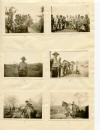
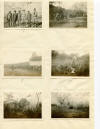
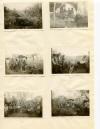
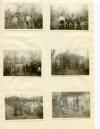
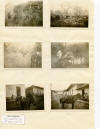
I thank Dr.
Gregory W. Ball, 24th Air Force
Historian (AFCYBER), for sharing his expertise,
correcting an error (I had mixed up Majors Bloor
& Rodriguez), and providing background
information on Major Bloor, including this
photograph from the Great War which I've put
side-by-side with one in this collection:
For more information on Major Alfred
Wainwright Bloor (1876-1952), see the Texas
State Historical Association's authoritative
article, written by Dr. Ball, at
www.tshaonline.org/handbook/online/articles/fbl75
(offsite).
|
Major Bloor's map of the two-day field
inspection, overlaid with my explanatory legend:
|
.jpg)
|
Photo USNA2-1.1. Truck load
of wounded coming to Managua from Matagalpa, March 26, 1927.
.jpg)
.jpg)
.jpg)
.jpg)
|
|
Photo USNA2-1.2. General
Vidaurre, second in command under Gen. Rivers
Delgadillo with his officers at Las Banderas,
March 26.
.jpg)
|
Gen. Vidaurre. Note
the half-moon formation,
characteristic of the period,
with highest-ranking officers in
the center flanked by their
lieutenants.
|
.jpg)
.jpg)
.jpg)
|
|
Photo USNA2-1.3. Machine gun
group of General Vidaurre's forces, March 26.
.jpg)
.jpg)
|
Figure on far left in first two photos is
Gen. Vidaurre. (Descriptions for
photos 3 and 4 on the original index
appear to be transposed; this is
definitely a "machine gun group".)
A refreshingly informal scene,
and a
formidable looking machine-gun.
|
.jpg)
|
Detail of the
machine-gun group.
|
|
|
Photo USNA2-1.4. General Vidaurre,
second in command of Gen. Rivers Delgadillo,
March 26.
.jpg)
.jpg)
.jpg)
|
(Above: Bloor report, p.
3, describing Saturday, March 26.)
Major Bloor paints General Vidaurre as
an incompetent procrastinator.
Under the heading, "Disposition for the
march," Bloor writes:
"The advance guard of 150 men procedded
the main body by about four miles, while
the
rear element of the command, 250 men,
[General Vidaurre] followed one
days' march in the rear of the main
body. . . . The advance guard and main
body remained all day Sunday in Teustepe
waiting for the rear
element to catch up,
thus losing 24 hours valuable time.
Some of the Conservative
generals [i.e.
General Vidaurre] do not seem to
have any conception of the value of
time, and the procrastination during the
past three weeks is almost unbelievable,
especially in view of the fact that the
rainy season will commence in about six
weeks and the campaign must be concluded
before then or drag over for another
year." (my
emphases). Major Bloor had
some good, even laudatory things to say
about several Conservative generals, but
he offered not even the first name of
General Vidaurre, a minor player in any
case.
|
.jpg)
|
If, on the other hand, the goal of Gen.
Vidaurre were to save the lives of his
soldiers by avoiding fruitless battles,
some might see in him an unsung hero.
|
.jpg)
|
In other words, the US military attaché's
remarks and the implicit assumptions
that give them substance — that
an aggressive military posture and
making haste to the battlefield best
suited the circumstances — need to be
read against the grain of the imperial
discourse of counter-insurgencency that
informs them. To the ill-armed,
ill-shod, ill-clothed, ill-fed,
ill-housed involuntary conscripts who
filled the ranks of Gen. Vidaurrre's
army — as they filled the ranks of most
Conservative armies in the civil war —
the prospect of rushing to battle after
a string of defeats probably appeared
both foolish and suicidal.
Perhaps, given the circumstances, for
many conscripts & their families, Gen.
Vidaurre's willful inaction made him a
hero, or at least was a blessing.
Major Bloor's observations are often
keen but his judgments should not be
taken at face value; there's much more
here than meets the eye.
|
|
|
Photo USNA2-1.5. Forces of
General Rivers Delgadillo on a March between Las
Banderas and Teustepe, March 26.
.jpg)
.jpg)
.jpg)
|
A marvelous photograph of an army in
motion, with the line of walking &
riding troops & officers stretching far
into the distance. Two men
standing on the left and two of the
horsemen on the right seem to be taking
note of the man taking a photograph.
|
|
|
Photo USNA2-1.6. General Rivers
Delgadillo, March 26.
.jpg)
|
"General Carlos Rivers Delgadillo.
About 35 years of age, fair education.
Military training acquired in present
revolution. Although he is a popular
hero, he is inclined to procrastinate
and impresses me as being weak and
vaccilating and not possessed of any
particular military ability."
Bloor report, p. 8.
|
|
|
Photo USNA2-1.7. US Military
Attaché
Major A. W. Bloor, General Carlos Rivers
Delgadillo, USMC Major D. Rodriguez (Ret.), and
three officers of Gen. Delgadillo, March 26.
.jpg)
.jpg)
.jpg)
|
Left to right: United
States Corps
Major D. Rodriguez (Ret.),
Ejército Nacional de Nicaragua
Gen. Carlos Rivers Delgadillo,
and
U.S. Military Attaché
Major A. W. Bloor.
|
|
|
Photo USNA2-1.8. Some of
Gen. Rivers Delgadillo's forces at rest between
Las Banderas and Teustepe, March 26.
.jpg)
.jpg)
|
Above:
Excerpt
from Bloor report, p. 2,
describing events later in the afternoon
of Saturday,
March 26. "At 4.25 pm
we passed the main body, 300 men
under General Rivers Delgadillo
about four miles south of
Teustepe, and upon arrival at
Teustepe at 5 pm we found his
advance guard of 150 men there."
|
.jpg)
.jpg)
|
This marvelous photograph conveys a
vivid sense of ordinary troops briefly
resting on march. Note the women
amongst the male troops.
As Major Bloor noted at this
point in his narrative:
"The usual number
of women (3 or 4 to every 15 or
20 men) accompanied the command
as cooks and washwomen.
One woman was marching with a
rifle in the column with the
men. Her husband was one
of the soldiers."
|
.jpg)
|
In the civil war as in the
rebellion that followed, warfare
& military mobilization were
family affairs.
|
|
|
Photo USNA2-1.9. Advance
Guard of Gen. Rivers Delgadillo's Forces at
Teustepe, March 26.
.jpg)
.jpg)
|
About half (ca. 75 of 150 soldiers)
of the advance guard of Gen. Rivers
Delgadillo's forces at Teustepe, around
5 p.m., Friday, March 26, 1927.
|
|
|
Photo USNA2-1.10. Soldier of
Gen. Noguera
Gómez in
foxhole,
morning of March 27.
.jpg)
|
In Major Bloor's words, "The tendency
of all the generals seems to be to get
as high upon the hill as possible. Gomez
has some lines of trenches about 50
years in the rear of the firing line . .
. The trenches are really 'fox holes'.
They are constructed for either one or
two men and are placed from 5 to 10
yards apart. Some are dug in,
others are constructed by piling up
loose stones, and still others by a
combination of digging and stones.
No wire entanglements are constructed.
The principle of counter attack is not
understood."
In this
photograph, Major Rodriguez looks on as the
entrenched soldier under Gen. Noguera Gómez,
rifle in hand, drapes his head with a
cloth, probably drenched with water from
his canteen on his left.
|
.jpg)
|
|

